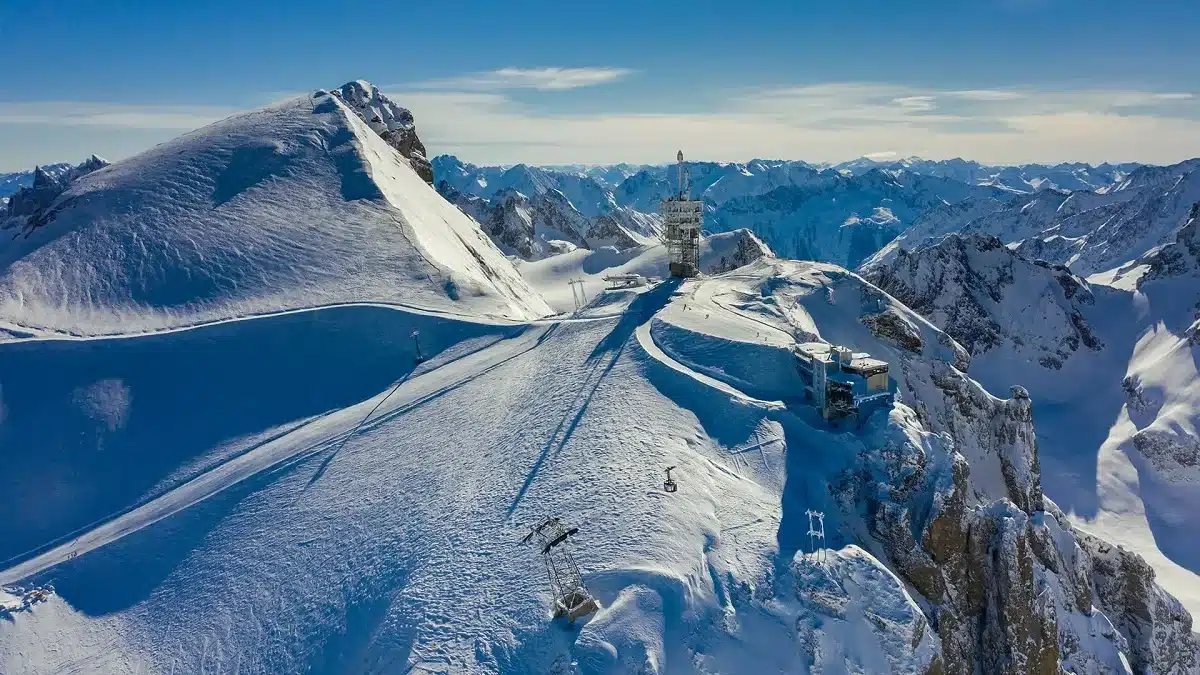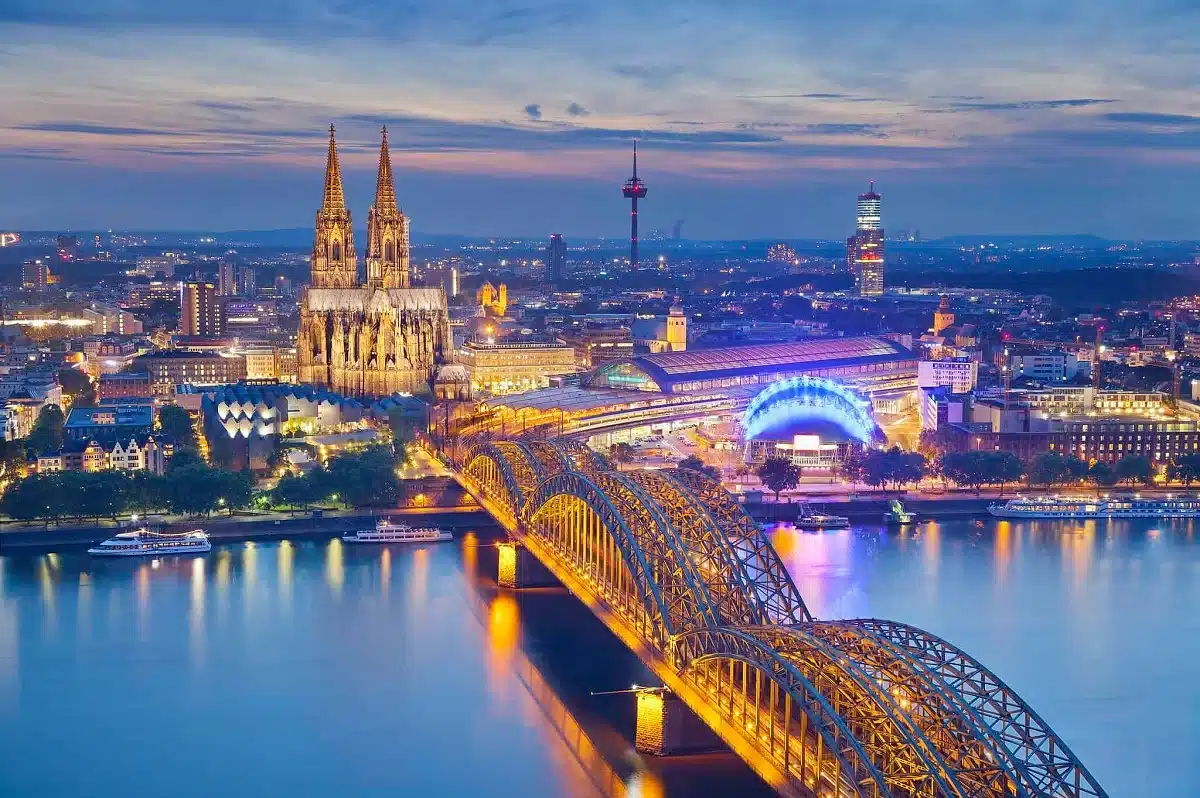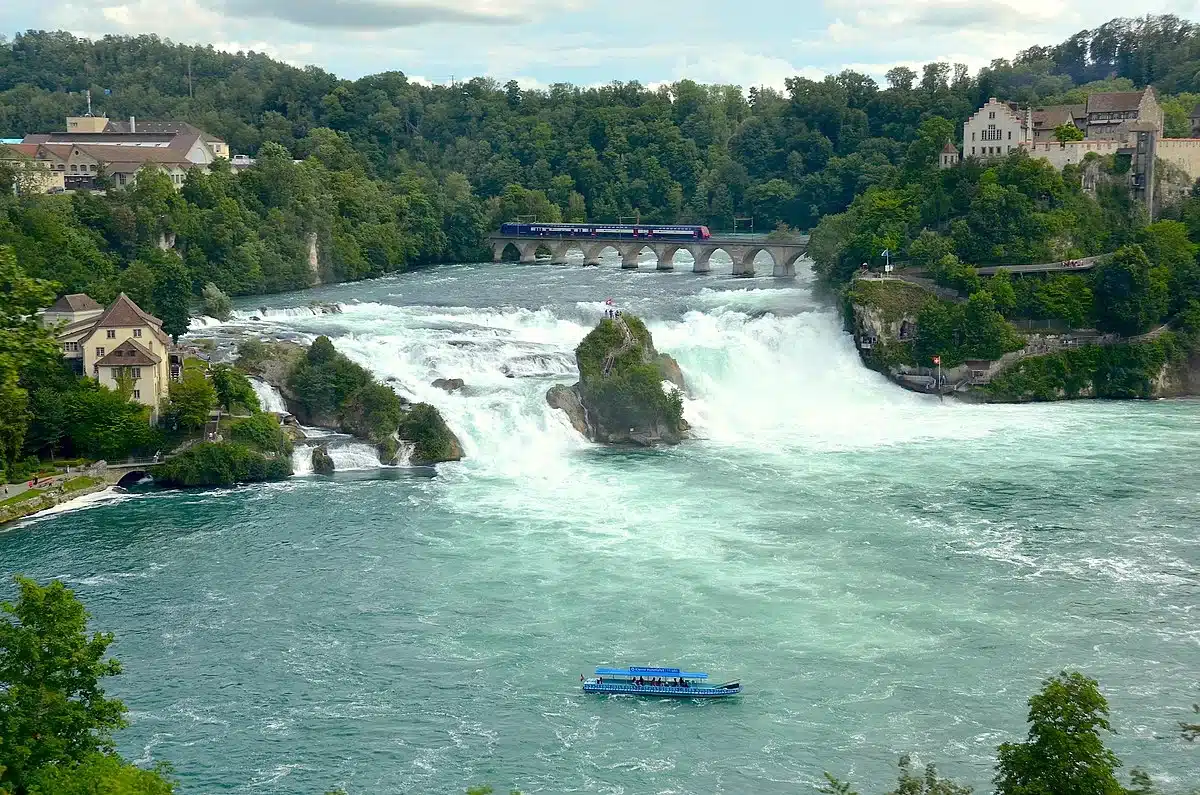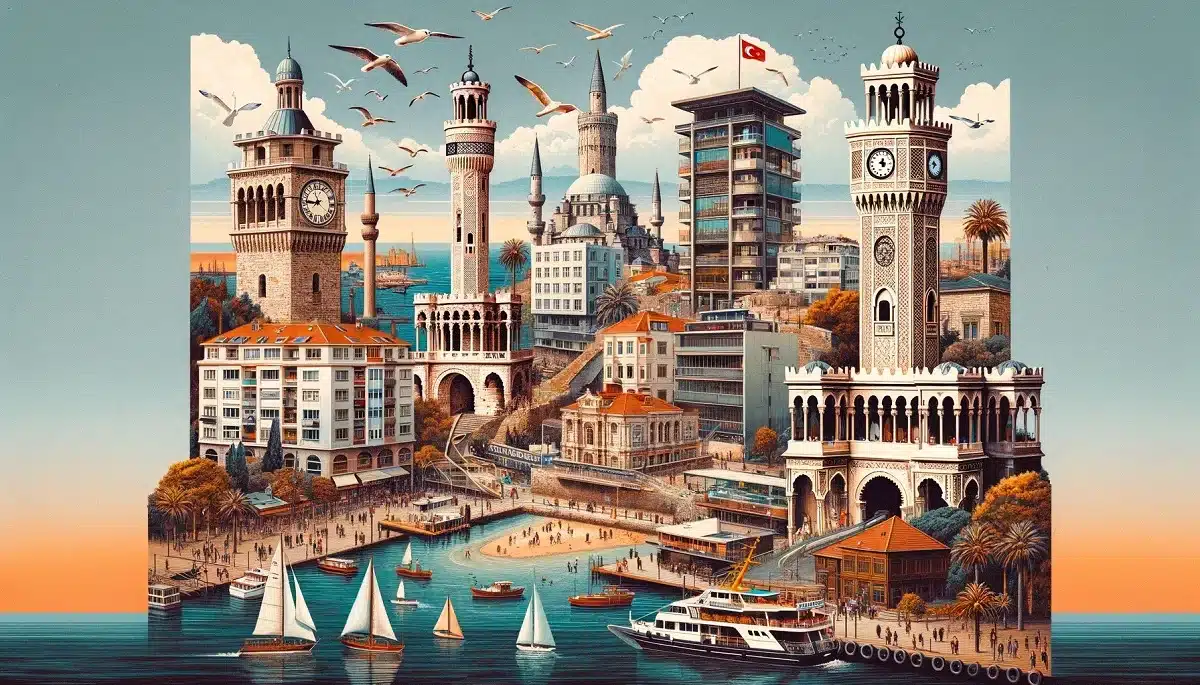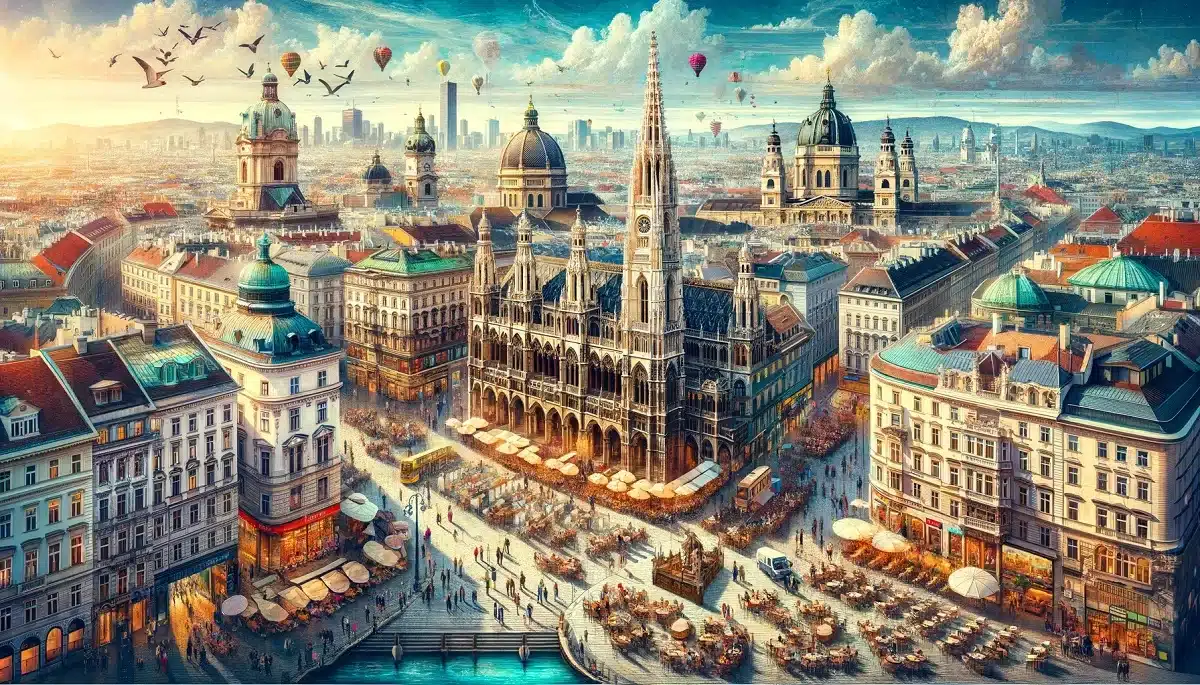Zurich’s strategic location in North-Central Switzerland and the country’s advanced railway network make the city an excellent starting point for day trips. From Zurich, you can explore Switzerland’s enchanting Alpine landscapes, visit postcard-perfect villages, tour the tiny principality of Liechtenstein, spend a day immersed in history, enjoy lake cruises, or relish the beauty of impressive waterfalls.
In the winter season, day trips from Zurich can include enjoying the snow at Bernese Oberland, one of Switzerland’s leading ski resorts. You can also discover much to explore in the picturesque city of Lucerne, where you can enjoy a historic paddle steamer cruise on the lake. Exploring the narrow streets of Bern, Switzerland’s capital, is another appealing option.
Traveling by train in Switzerland is exceptionally easy, and there are numerous day tour options to explore the tourist spots around Zurich. Whether you are taking a short break from a business trip or exploring the country with your family, Zurich offers a plethora of options for the best day trips.
Exploring Jungfraujoch and the Bernese Oberland
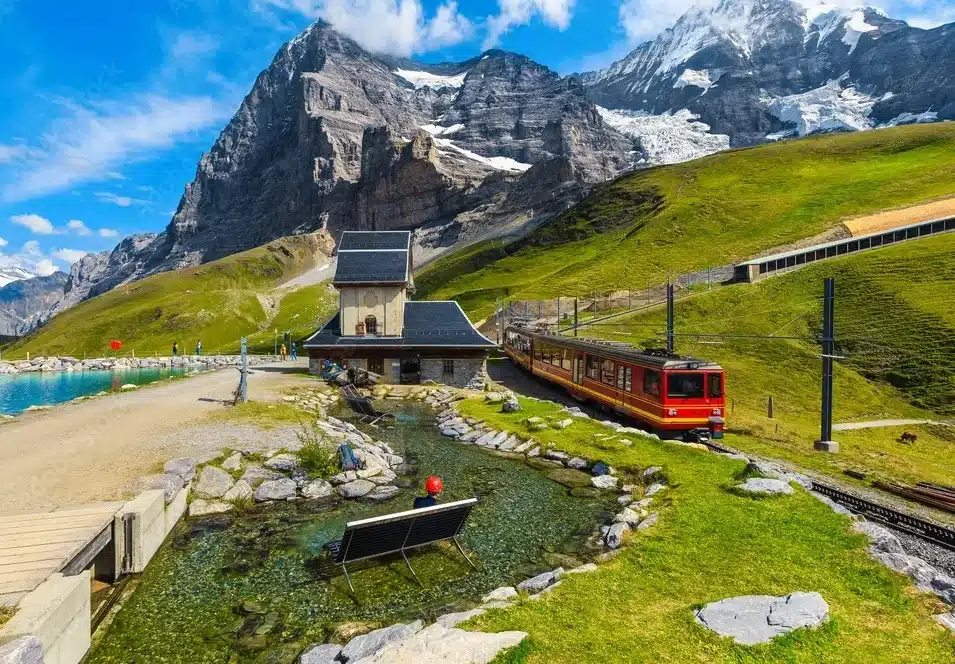
The Bernese Oberland is home to the impressive trio of peaks—Jungfrau, Mönch, and Eiger—making it one of Switzerland’s most sought-after regions. This area is a popular destination for skiers and mountaineers year-round and is also famous for its pastoral Alpine villages such as Wengen and Lauterbrunnen. These villages offer idyllic landscapes surrounded by steep green pastures and stunning waterfalls.
Interlaken, nestled between Lake Thun and Lake Brienz, is known as the region’s largest town and captivates visitors with its surrounding natural beauty. In Grindelwald, you can find a cogwheel train that ascends to the Jungfraujoch mountain pass, part of the UNESCO World Heritage Site, offering spectacular views.
Jungfraujoch hosts Europe’s highest train station, providing amenities such as a hotel, restaurants, research stations, and an Ice Palace at an altitude of 3,454 meters. Visitors can take an elevator to the Sphinx observation deck, which offers panoramic views of the Aletsch Glacier and the Alps. This journey to Jungfraujoch is one of the most unforgettable experiences you can have in Switzerland.
The Europe’s Summit Day Trip from Zurich offers an 11-hour bus tour that explores this magnificent region. The tour includes the cogwheel railway to Jungfraujoch and provides participants the opportunity to visit the Ice Palace and view the breathtaking Alpine vistas from the Sphinx’s summit observation deck.
Discovering Lucerne: A Medieval Trading Town
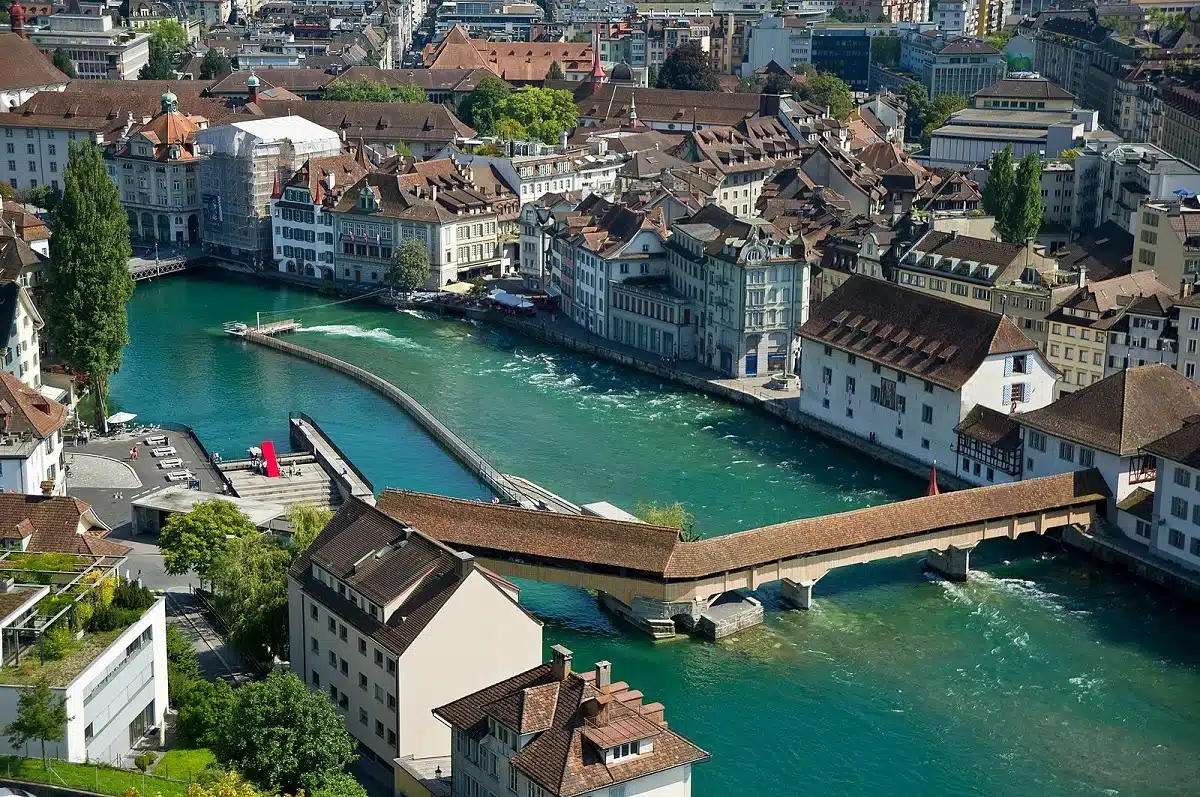
Lucerne is positioned around the Reuss River, on the shores of Lake Lucerne, and is known as a historic medieval trading town. This city carries the traces of the past with its narrow streets and preserved architecture. One of Lucerne’s most iconic landmarks is the Kapellbrücke (Chapel Bridge), built in 1333. This covered wooden bridge contains over 100 paintings that reflect the town’s history and is adjacent to the octagonal Wasserturm, a water tower dating back to the 13th century.
Another remarkable feature is the Dance of Death paintings on the Spreuerbrücke, constructed in 1406. As you explore Lucerne’s historical center, Altstadt, you will see brightly painted old town houses, half-timbered buildings, and small squares adorned with fountains. Notable is the Altes Rathaus (Old Town Hall), built between 1602-1606, and its adjacent 14th-century tower.
The detailed Gothic-style fountain in Weinmarkt is also worth seeing. The 9.5-hour Lucerne City Tour starting from Zurich and traveling over the Albis Pass is an excellent opportunity to explore this historical city. The tour begins with guided visits to significant sites like Kapellbrücke and the Lion Monument and ends by enhancing your understanding of Lucerne’s rich history.
After the tour, you can visit museums or take a boat trip on Lake Lucerne, offering a chance to explore the city on your own for the remainder of the day. This excursion provides a full experience of Lucerne’s historical and cultural wealth.
Mount Titlis: Adventure at the Summit of the Alps

At the summit of Mount Titlis, located at 3,238 meters, you are not only greeted by breathtaking 360-degree views of the Alps but also the impressive glaciers and the unique atmosphere of the Alpine environment. Your journey begins in Zurich, passing through Lucerne and along the scenic lake shores to Engelberg in the Swiss Alps.
Starting from Engelberg, you begin your ascent to Mount Titlis and reach the summit via a rotating cable car, which offers changing views in all directions. At the summit, the Ice Flyer chairlift brings you up close to the enchanting ice formations and deep crevasses. The Glacier Park’s snow slide transforms this frozen world into a massive natural playground.
For more thrills and spectacular views, you can walk across Europe’s highest suspension bridge. Alternatively, sit back at a café on the sunny terrace at the mountain’s peak and enjoy the unparalleled views. The Day Trip from Zurich to Mount Titlis offers a guided tour that explores the natural beauty of the mountain’s summit and the key sights of Lucerne. The winter tour also includes options for snow tubing or beginner-level skiing with provided equipment.
Rheinfall (Rhine Falls): Europe’s Magnificent Waterfall
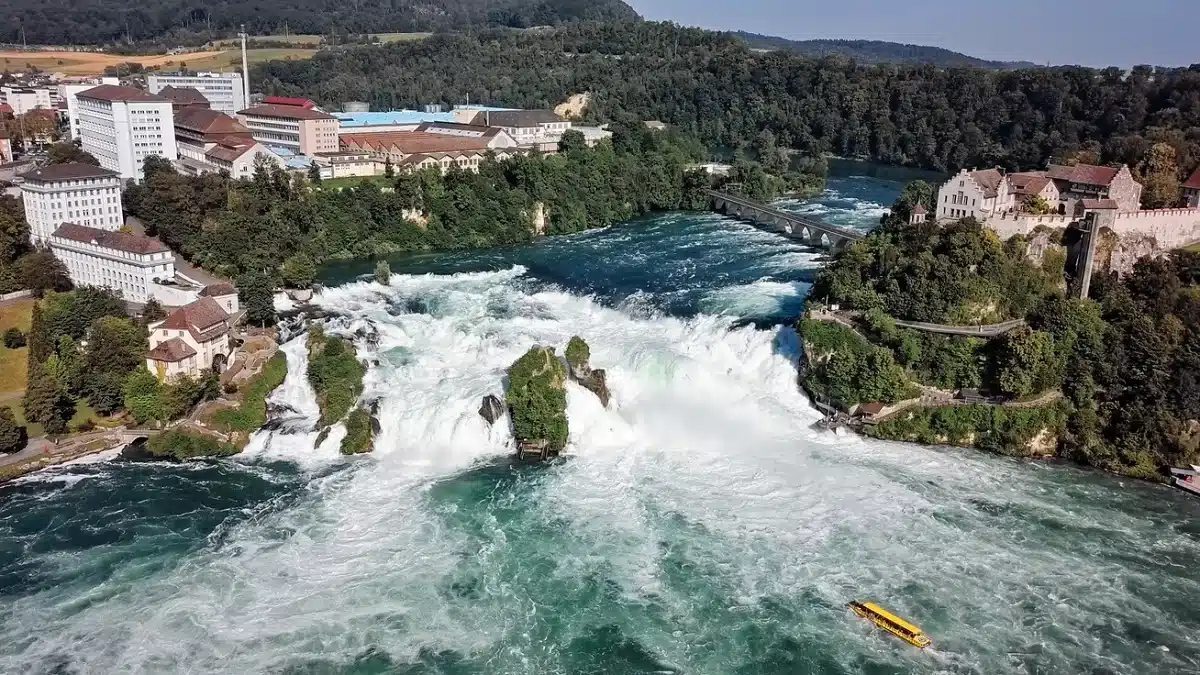
The Rhine River flows through a verdant valley starting from the western end of Lake Constance and cascades over Rheinfall, Central Europe’s most powerful waterfall. This spectacular waterfall flows over a 150-meter wide and 21-meter high Jura limestone outcrop, and features two large rocks in the middle of the river. The water flow reaches its peak in June and July as the mountain snow melts.
The falls are easily visible from both sides, and you can take a 30-minute boat tour to experience the turbulent waters up close. Schlössli Wörth, situated on an island at the falls, once served as a significant shipping and loading point on the trade route from Lake Constance to Basel and now operates as a restaurant and café with views of the waterfall. The falls are particularly enchanting at night when illuminated.
The Half-Day Rhine Falls Tour from Zurich takes you to this grand natural wonder in a comfortable, climate-controlled bus. The tour also includes the picturesque town of Schaffhausen and nearby castles. If your flight to Zurich arrives at a time when your hotel is not ready, or if you are passing through the city, the option for pickup and drop-off at the airport makes this tour a very practical choice. This tour offers a great opportunity to explore the natural beauty outside the city.
Exploring the Eastern Swiss Alps and Liechtenstein
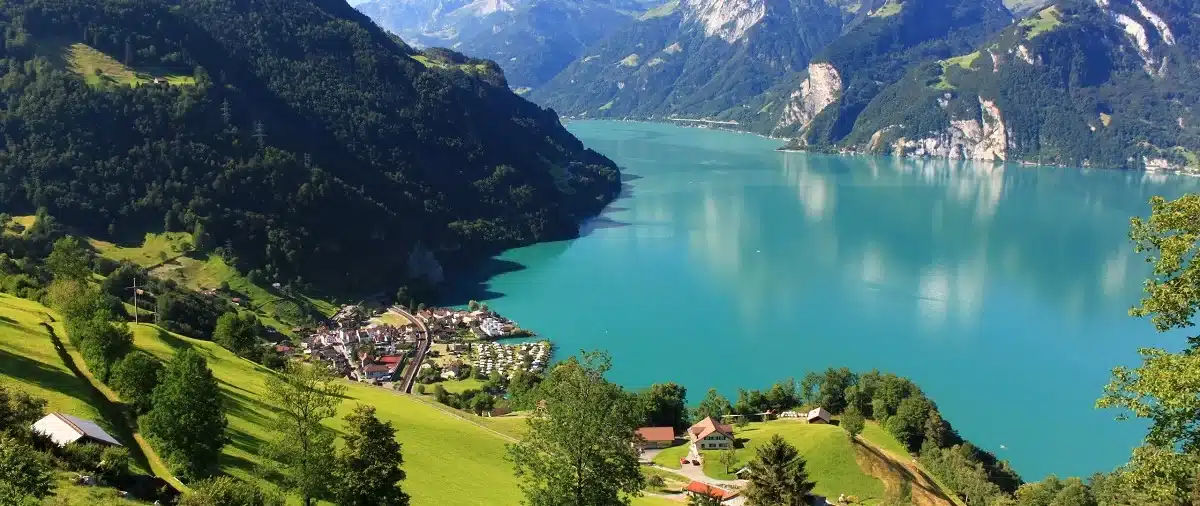
The Eastern Swiss Alps, located east of Zurich, are surrounded by impressive Alpine peaks, crystal lakes, and green valleys. This region is globally recognized as the homeland of Heidi and the town of Maienfeld serves as the epicenter of this story. The Heidi House in Maienfeld, open during the summer months, is furnished as a rustic home dedicated to the children’s classic “Heidi” and remains a popular photo spot throughout the year.
Liechtenstein, a small principality located between the Austrian Alps and “Heidiland,” is known for its hilltop royal castle and world-renowned postage stamps. The capital, Vaduz, is one of Europe’s smallest capitals, situated along the picturesque banks of the Rhine River. Liechtenstein is home to five castles, of which Schloss Vaduz and Burg Gutenberg are still intact, while the others remain as romantic ruins.
The Heidiland and Liechtenstein Tour: Two Countries in One Day from Zurich is a wonderful option to explore this spectacular region. Throughout the tour, your guide will point out significant landmarks as you travel by bus, sharing insights into the region’s history and culture. The journey starts with a Zurich city tour, continues along the shores of Lake Zurich to the medieval castle of Rapperswil.
During your stop in Maienfeld, you’ll have ample time to visit the Heidi House, and afterward, you’ll get the chance to explore the capital of Liechtenstein, Vaduz. This tour offers a cultural exploration amidst the natural beauty of the Alps and leaves visitors with lasting memories.
Bern: The Historic Capital of Switzerland

Bern, the capital of Switzerland, is located just 125 kilometers southwest of Zurich and is easily accessible by direct train. The Old Town of Bern, known for its characteristic steep roofs and arcades that house 17th and 18th-century homes and shops, has earned it a UNESCO World Heritage Site designation.
The dramatic beauty of Bern’s Old Town is due to its location on a high ridge almost entirely surrounded by the Aare River. This historic area hosts many significant attractions, including the famous Zytglogge clock tower with its moving figures and the grand Munster. However, the real charm of Bern lies in its cobblestone streets, ambitious fountains, and the rich historical fabric of the old city area.
The 10.5-hour Day Trip from Zurich to Bern provides an opportunity to explore Bern’s magnificent Old Town and includes stops where you can taste iconic Swiss products like Emmental cheese and Kambly Swiss biscuits. This tour involves a drive through the Entlebuch Valley and the Upper Emmental Valley. The guide will point out key landmarks along the way and provide insights into the region’s rich history. At the stops, you can watch demonstrations of biscuit and cheese making and taste these famous Swiss flavors. This trip offers a rich experience both visually and in terms of taste.
Stein am Rhein: A Vivid Portrait of Medieval Switzerland
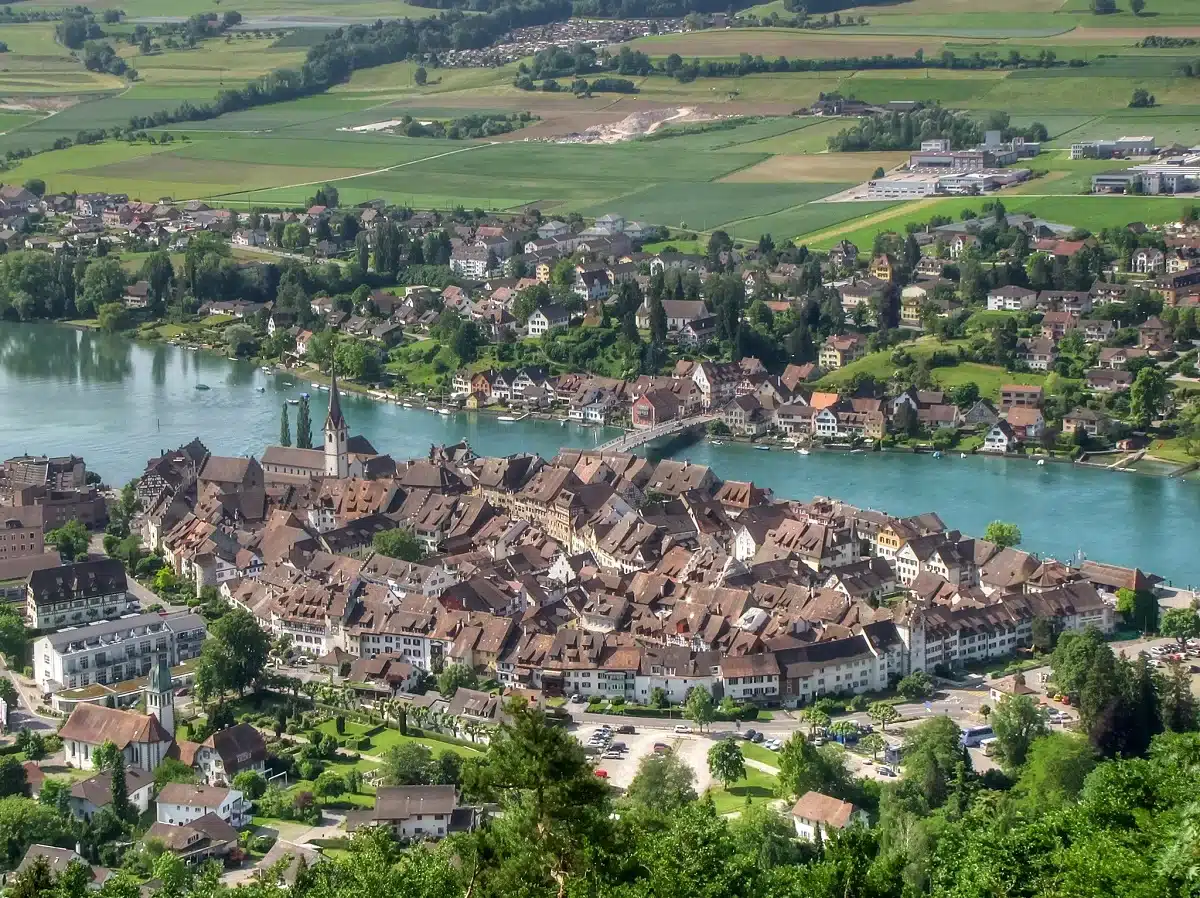
Upon arriving in Stein am Rhein from Zurich, which takes about an hour by train, you’ll feel as though you’ve traveled back in time. This enchanting town transports you directly into medieval Switzerland, albeit its wooden structures are likely much better preserved than in medieval times. Buildings adorned with colorful frescoes encircle the charming main square, Rathausplatz, while flowers spilling from window boxes make every corner photo-worthy.
Considered one of Europe’s most attractive towns, Stein am Rhein has historically stood along the banks of the Rhine River as a Roman fort. This fort was built in the third century to protect the river. To better understand the town’s rich history, you can visit Hohenklingen Castle, established over the town in 1225, which now contains a museum.
From the castle, you can enjoy extensive views of the town and the river valley. Also, explore the impeccably preserved St. Georgen Medieval Monastery, visit the gallery displaying local artisans’ works, or soak in the medieval atmosphere at a café in Rathausplatz. This historic site offers visitors the opportunity to trace the past and experience this unique cultural heritage.
Schaffhausen: A Journey of Historical and Cultural Discovery
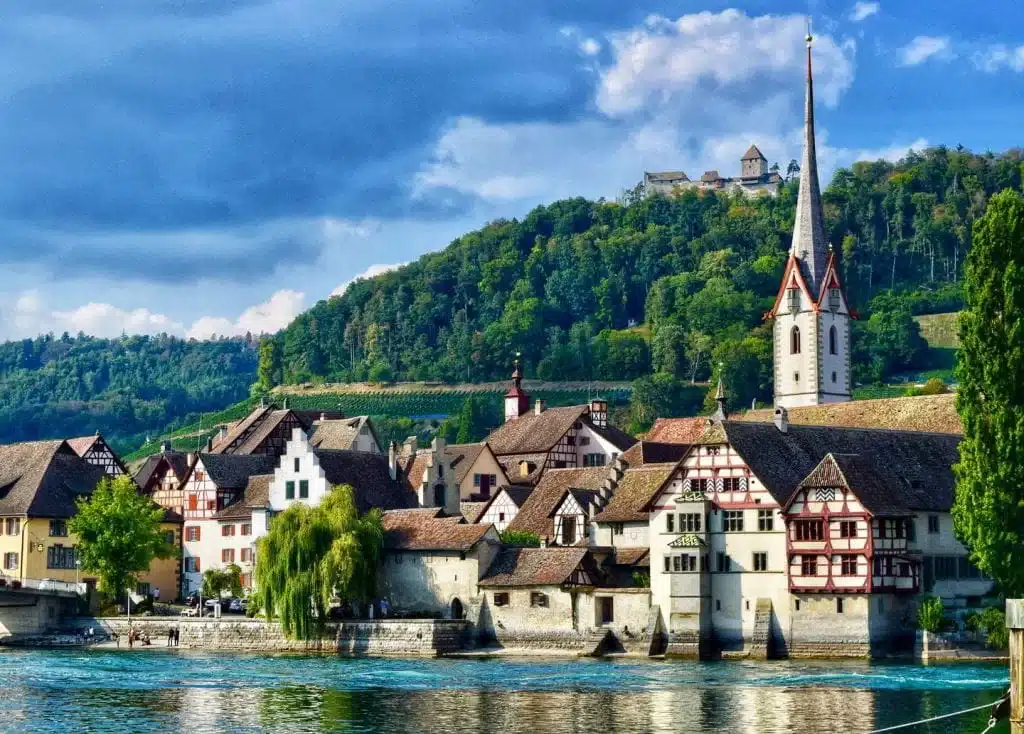
Schaffhausen, located just 50 kilometers from Zurich, is known for its old town featuring colorful painted timber-framed houses adorned with oriel windows and heraldic symbols. These houses bear witness to the city’s history and are complemented by historic structures such as the 16th-century Fronwag tower and two fountains located in Fronwagplatz.
Münster, constructed between 1087 and 1150, originally served as the church of a Benedictine monastery. This captivating structure stands out with its elegant 12th-century arches and is a must-see.
The monastery buildings now house the All Saints Museum, considered one of Switzerland’s most comprehensive local museums. It boasts a vast collection that includes prehistoric artifacts, religious art objects, period rooms, traditional costumes, and works by modern Swiss artists. Additionally, two chapels from the 11th century and a Romanesque-style lodge are other must-visit sections of the museum.
Kastell Munot is perched on a vine-covered hill and dominates the old town and the Rhine River. This circular castle, dating back to the 16th century, is fortified with walls thicker than five meters and serves not only as a historical structure but also as a vantage point offering panoramic views of Schaffhausen city and the Rhine valley. This castle provides a deep insight into the region’s history and culture, offering visitors unforgettable experiences.
Winterthur: A City Brimming with Art and History
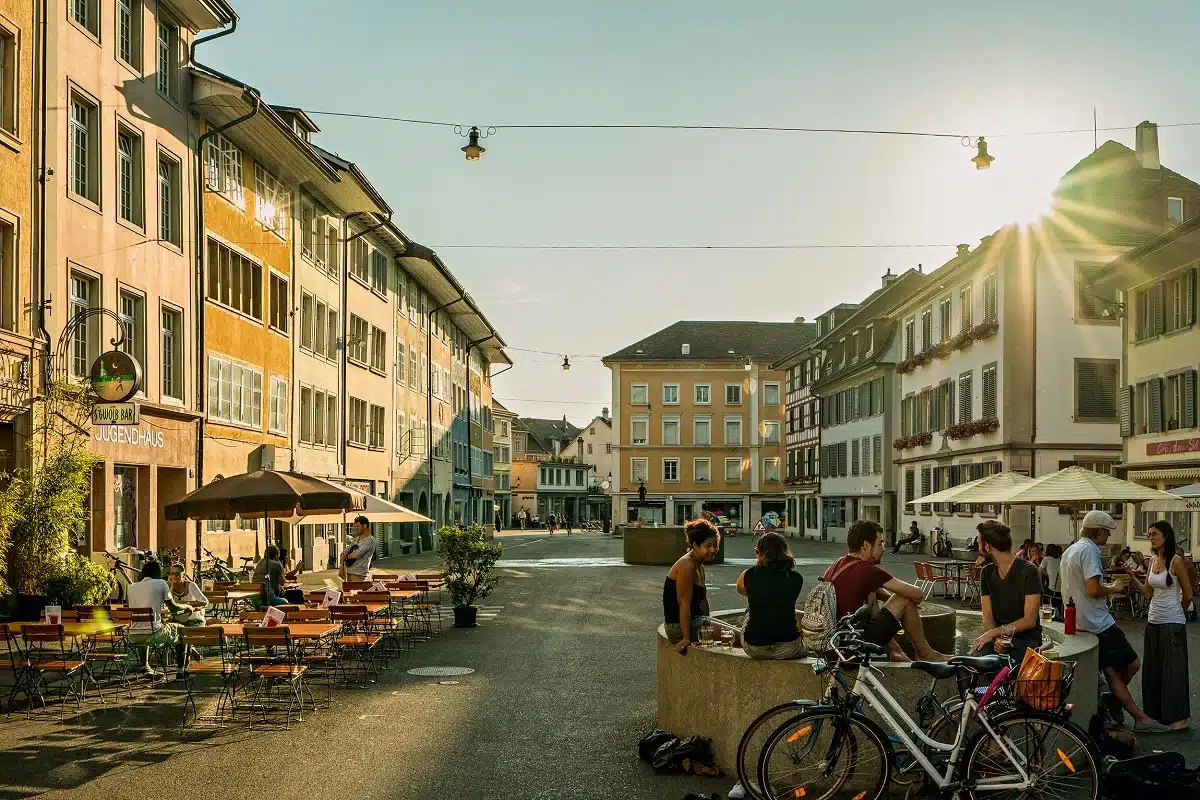
Just 26 kilometers from Zurich, Winterthur owes its rich art and cultural heritage to the success of its past craft industries. At the heart of the city, the Old Town stands as a testament to historical architectures with streets lined up with structures from earlier periods. Among these, the Waaghaus in Moorish-Gothic style, Zur Geduld with its early Baroque facade, and the Rococo-style Hans zum Adler are notable.
Despite being relatively small, Winterthur is enriched with various museums including an industrial art museum, a natural history museum, a clock collection, and three separate art museums. The Oskar Reinhart Collection, one of these, hosts works by famed artists such as Rubens, Rembrandt, El Greco, Goya, Renoir, and Cézanne.
The Technorama allows exploration of science and technology through hands-on exhibits. This interactive science center is particularly appealing for families, offering visitors the chance to experience science in a fun way. Winterthur is an excellent destination for both cultural and educational exploration, offering rich art collections and interactive exhibits for visitors of all ages.
Mount Pilatus: An Engineering Marvel of Switzerland
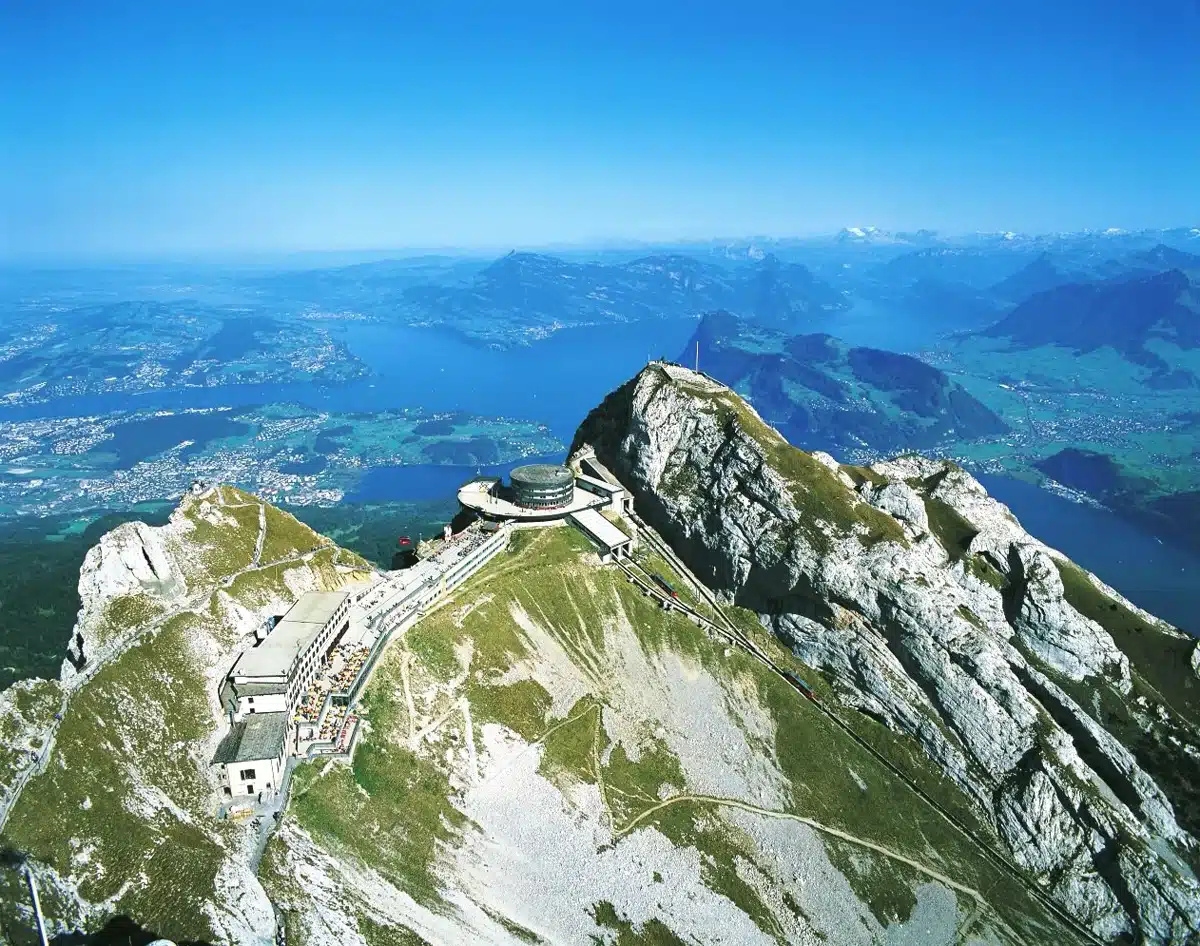
The journey to Mount Pilatus starts from Zurich and showcases the marvels of Swiss engineering. This trip involves both cable cars and one of the world’s steepest cogwheel railways, making numerous mountain towns and impressive peak views accessible.
The journey continues through the city of Lucerne to Kriens, where you take a panoramic gondola ascending near the summit. From a terrace near the peak at 2,132 meters on Mount Pilatus, you can observe the mesmerizing panoramic views of central Switzerland and the Alps. Short hiking trails provide access to various peaks of this limestone massif, offering expansive views.
The return journey is by the world’s steepest cogwheel railway, which has a maximum gradient of 48%. This railway takes you down to Alpnachstad, from where a scenic boat ride across Lake Lucerne takes you back to Lucerne and then to Zurich.
The Mount Pilatus Summer Day Trip from Zurich offers this adventure in a single package. Lasting 9.5 hours, this tour includes transport by an air-conditioned bus to Lucerne and from there, a comprehensive tour on the mountain using the gondola, aerial cableway, and cogwheel train. After exploring the historical and interesting sites of Lucerne, a moderate hike is done at the mountain’s peak. The tour is concluded with a boat trip on the lake, followed by a return to Zurich. This tour allows you to fully experience Switzerland’s natural beauty and engineering feats.
St. Gallen: The Heart of Baroque Architecture and Cultural Heritage
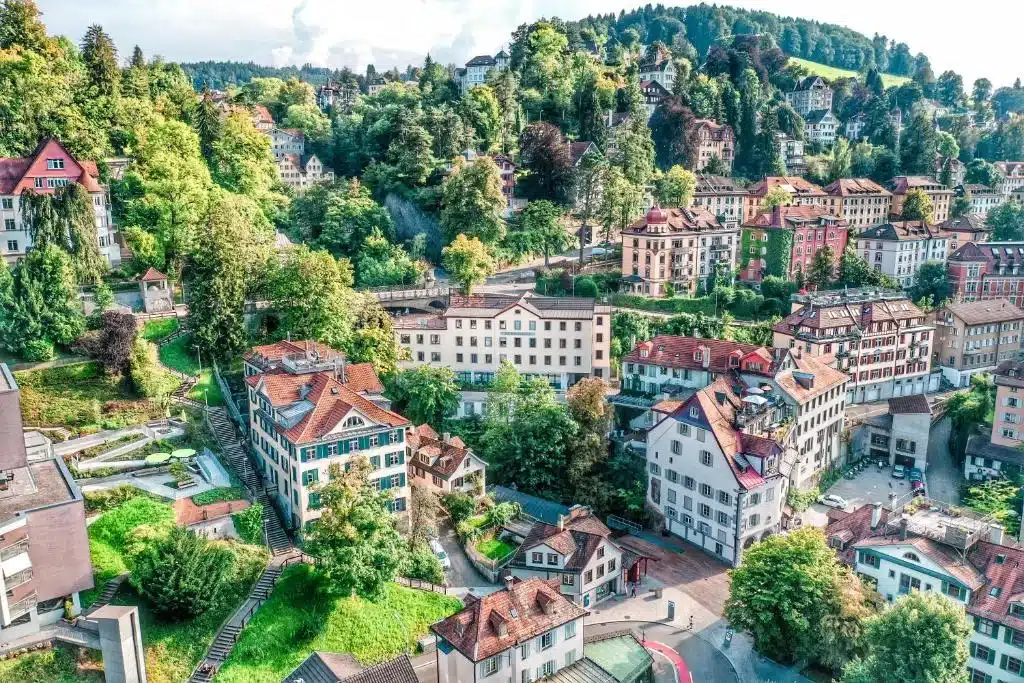
Just one hour from Zurich, St. Gallen is a charming Swiss town renowned for its Baroque period buildings. Originally founded in the early 700s as a site for a Benedictine monastery, it evolved into one of Europe’s most influential centers of culture and learning.
The town’s most striking structure is the magnificent St. Gall Abbey. The Abbey is famous for its Baroque-style ceiling, frescoes adorned medallions, and details framed with golden decorations. Its library, known as one of the oldest monastery libraries in the world, stands out with its elegantly curved galleries and intricate woodwork.
St. Gallen Cathedral, transformed from the old monastic church, is also a masterpiece of Baroque architecture and decoration. The entire monastic complex has been listed as a UNESCO World Heritage Site due to its rich history and architecture.
Make time to visit the Textile Museum as well. This museum offers a wide range of exhibits from ancient Egyptian laces to modern textiles. St. Gallen is particularly famous for its woven linens, known for their delicacy and referred to as “white gold.” The museum showcases St. Gallen’s history as a textile center and its craftsmanship in this field.
Visiting this town provides a deep dive into Switzerland’s artistic and educational past.
Baden: A City of History and Healing
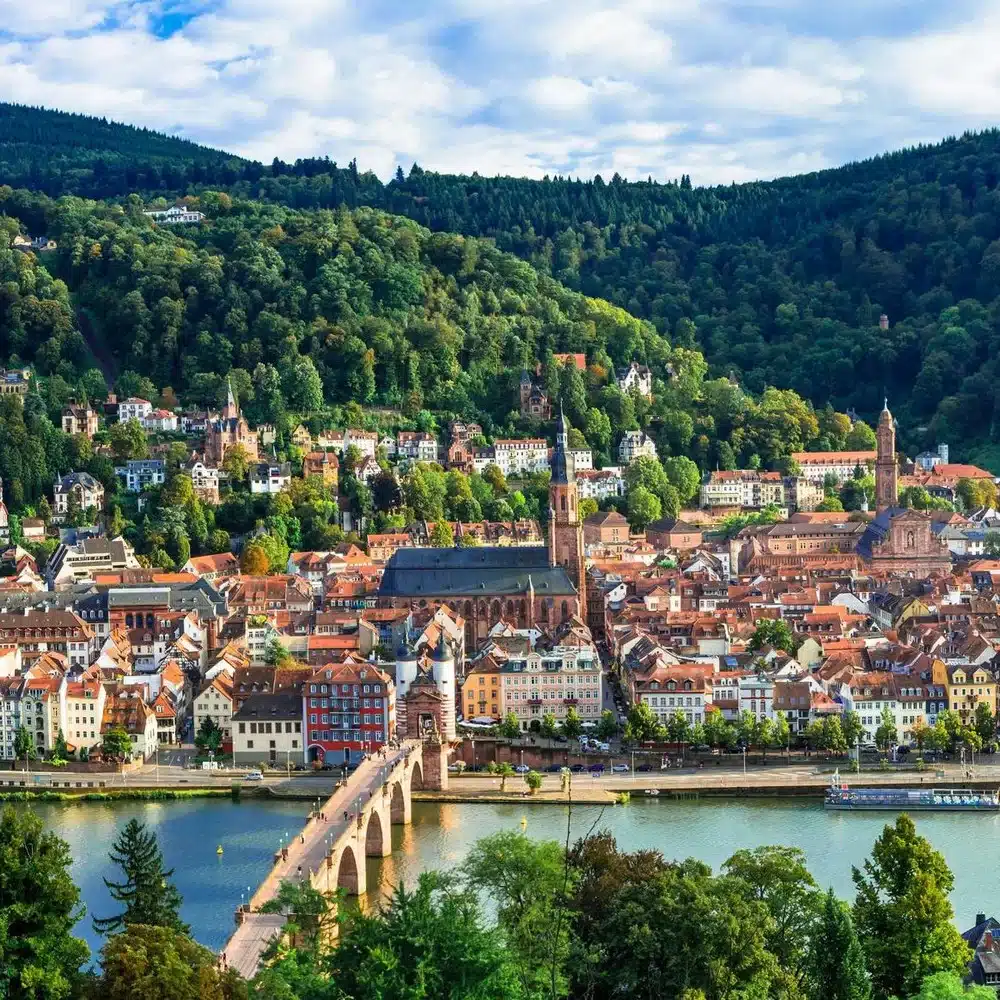
Located about 20 minutes south of Zurich, along the banks of the Limmat River, Baden has been known for its thermal waters since the Roman times. These spas have the highest mineral concentration among all spas in Switzerland, offering visitors a unique healing water experience.
The city hosts numerous luxury wellness programs offered by various spas and hotels, as well as public pools fed by thermal waters that are free for the public to enjoy. Particularly, an eight-meter long bench known as the Thermalbank allows visitors to dip their feet into the warm waters.
A new bathhouse center, designed by the renowned Ticino architect Mario Botta and planned to open in 2021, will feature not only spa pools but also cafes and spaces for social gatherings and relaxation.
Baden is also known for its enchanting historical center, surrounded by medieval towers and half-timbered houses. The Langmatt Foundation Art Museum houses one of the most important collections of Swiss Impressionist art, making it a must-visit destination for culture enthusiasts.
With its natural beauty and rich history, Baden offers visitors both relaxation and exploration opportunities, making it an ideal day-trip destination from Zurich with its easy access.
These sections not only highlight the cultural and historical richness of each location but also suggest practical ways to enjoy and explore these destinations.
Glarus: A Hidden Gem in the Alps

Glarus, a small canton enveloped by some of Switzerland’s most enchanting valleys, is easily accessible from Zurich by car or train. Located just south of Lake Walensee, this region serves as an excellent base for outdoor activities and natural explorations.
The area is bordered to the west by the 2,332-meter-high Glärisch ridge and to the south by the massive 3,614-meter Tödi Mountain. Glarus hosts some of the most spectacular Alpine landscapes, making it an ideal destination for hiking and mountaineering enthusiasts.
From Linthal, a cable car runs to the Braunwald resort, which offers a variety of activities throughout the year. This car-free resort is a perfect starting point for hikers and climbers, offering stunning views and an immersive nature experience.
Glarus is also noted for its historic sites. The Freulerpalast in Näfels features a magnificent Renaissance gateway and Early Baroque-styled interiors, now housing a cantonal museum. However, the true allure of Glarus lies in its valleys and mountains that facilitate outdoor activities.
Klöntal is one of Glarus’s most captivating valleys, renowned for its Klöntalersee Lake and surrounding mountain streams. From here, one can drive, take a postal bus, or walk over the Schwammhöhe to Netstal, offering impressive views of the enclosing Alpine scenery.
The capital of the canton, the city of Glarus, is located on the route from the Klausen Pass to Altdorf. Along this journey, you will encounter the 93-meter-high Staubi Waterfalls and the picturesque views of the Schächen Valley. This unique journey offers an unforgettable opportunity to explore the natural and historical beauties of the Alps.
Regensberg: Switzerland’s Medieval Jewel
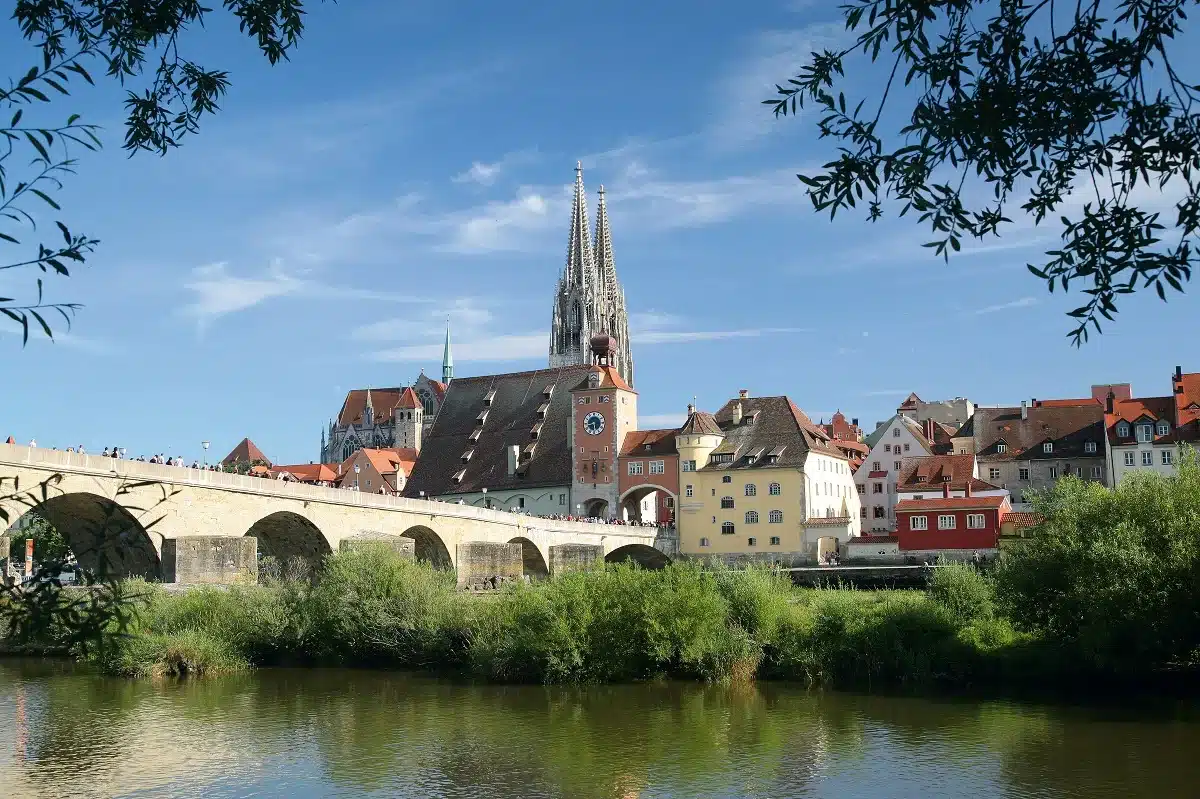
Regensberg, located 18 kilometers northwest of Zurich, is considered one of Switzerland’s best-preserved medieval towns. Known for its beautifully restored half-timbered buildings dating back to 1540, the most famous of which is the Rote Rose (Red Rose) House.
The town’s most notable structure is the Rundturm, a round tower dating from the 12th century. With walls three meters thick, this tower is one of the town’s most striking features and the only remaining part of the original castle structures. The castle complex also hosts one of the country’s deepest wells, descending to a depth of 57 meters, dating back to the 16th century.
Inside the Rundturm, there is a museum that offers valuable insights into the town and castle’s history. This museum not only conveys Regensberg’s rich history and cultural heritage to visitors but also helps them understand the historical context of the town.
For visitors, Regensberg offers an atmosphere where one can breathe in the essence of the past, feeling as if stepping into a bygone era. Walking the streets of Regensberg is akin to a time travel experience into a tranquil corner of medieval Europe.
These descriptions not only highlight the cultural and historical richness of each location but also suggest practical ways to enjoy and explore these destinations.
